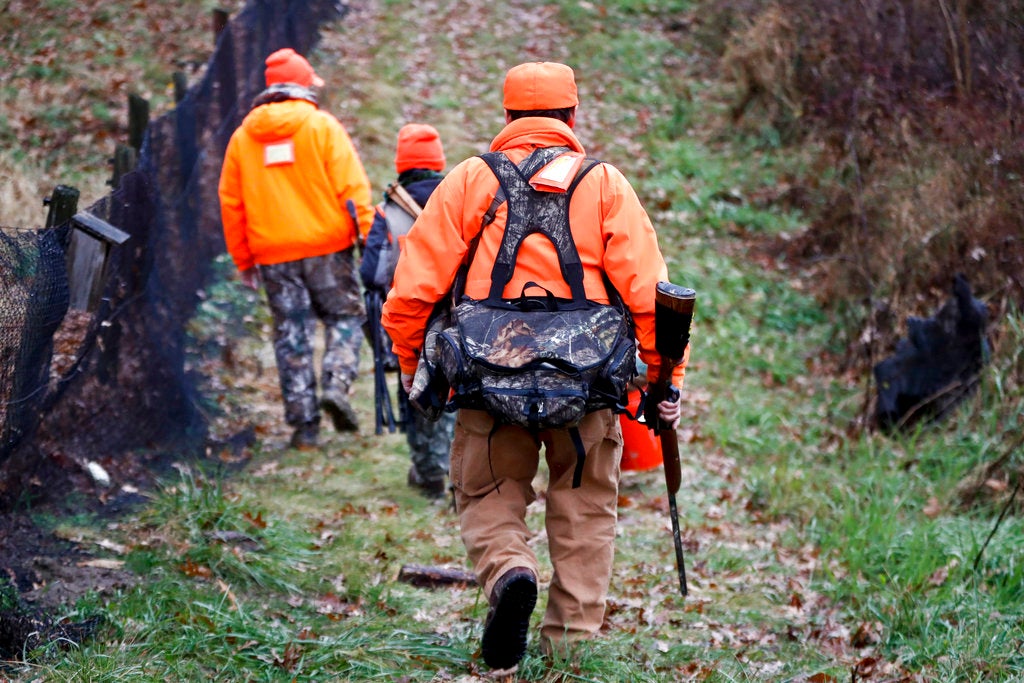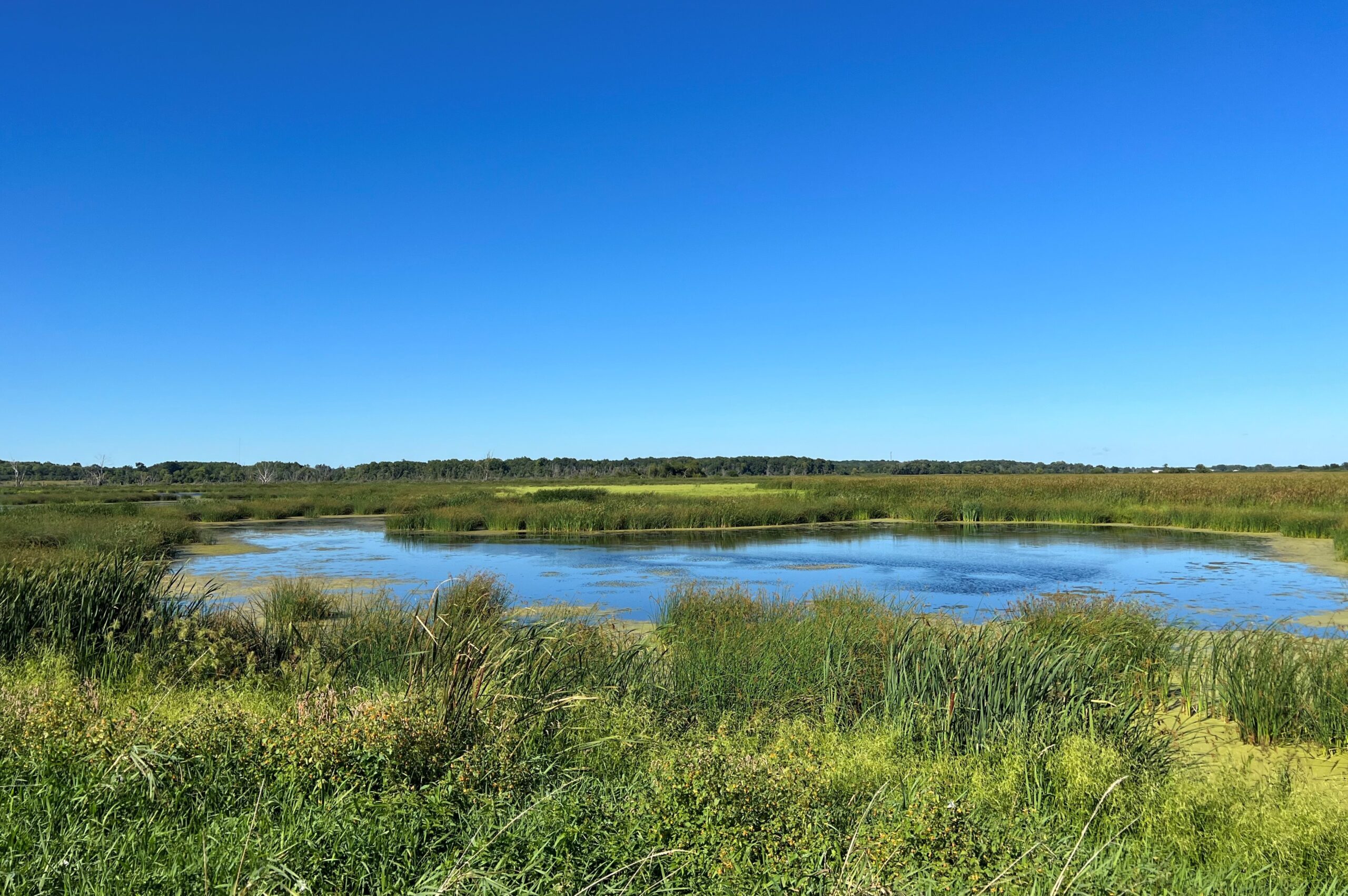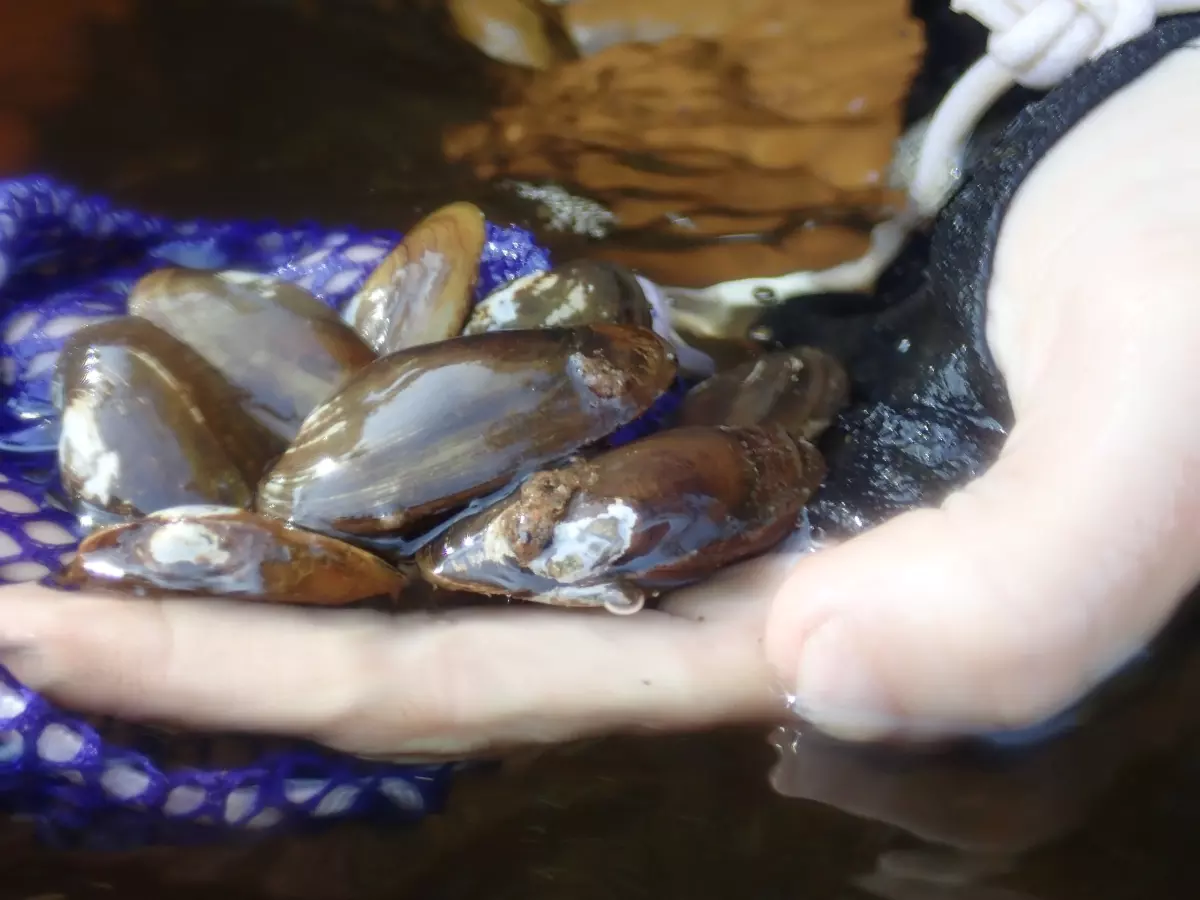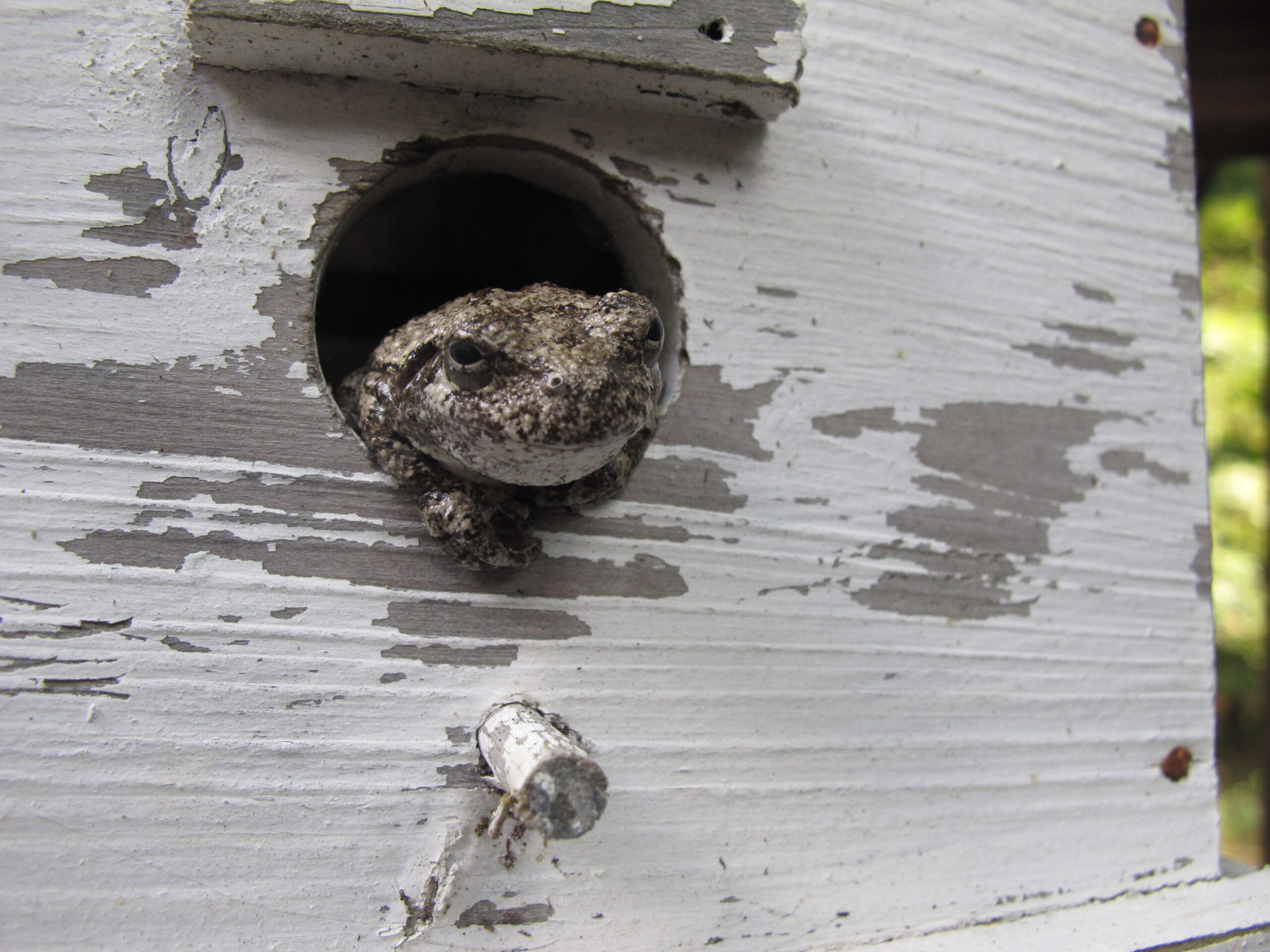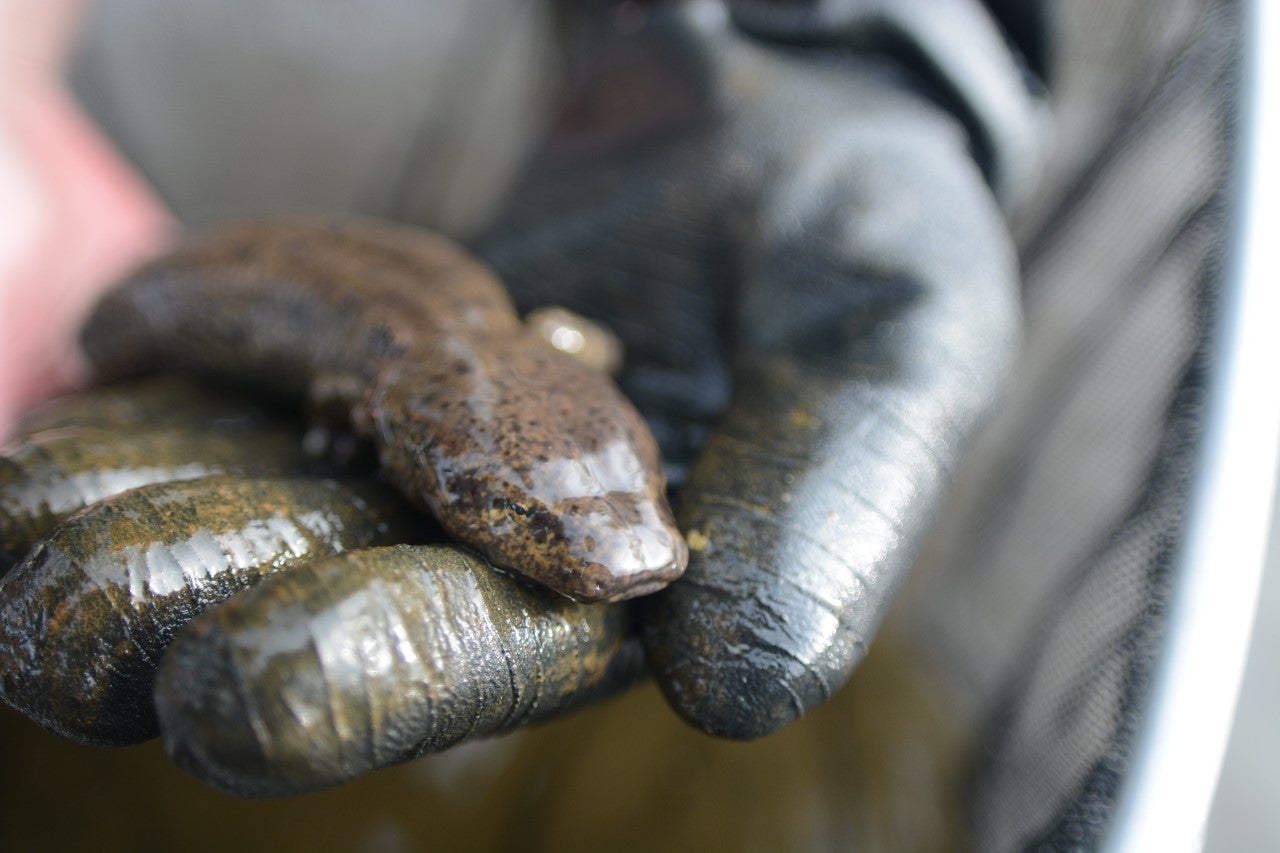At the Pike Lake unit of the Kettle Moraine State Forest near Hartford in southeastern Wisconsin, there are ponds that, at least at this time of year, are brimming with water. Wildlife scientists say that in that water, salamander eggs are plentiful — so plentiful that removing some won’t harm the ecosystem.
Just recently, five researchers put on their waders and headed into one of the ponds. Their goal: To collect eggs for a Wisconsin project that’s trying to relocate salamanders to protected property in suburban areas, in an effort to help a species that has suffered population loss as a result of urban sprawl.
After 10 or 15 minutes of looking at submerged grasses or tree branches, the researchers had only managed to find one small sac of tiger salamander eggs. But then, Emily Biagi made a larger discovery.
Stay informed on the latest news
Sign up for WPR’s email newsletter.
“I think they are tigers based on the number that are in the glob,” she said. “There’s probably a good 20 (eggs) or so.”
By the end of the expedition, about 10 slimy egg sacs containing around 300 eggs in total, had been collected. The specimens were placed in a half-filled bucket of water, and then loaded into a pickup truck for the 25-mile drive to the Mequon Nature Preserve.
Investing In The Growth Of Salamanders
Jason Nickels, who works at the preserve, said wetlands draining, farmland development, parking lots and homebuilding in the Milwaukee suburbs decades has killed many salamanders over the years. He said it’s been hard to get them back.
“In our area, because we’re surrounded by farm field and urban setting, it’s very difficult if at all possible for especially the amphibian species to be able to relocate to a habitat that’s very suitable for them,” said Nickels.
Scientist Gary Casper with University of Wisconsin-Milwaukee said the salamanders aren’t a threatened or endangered species in Wisconsin. Nevertheless, he said distributing them to places like Mequon makes sense biologically.
“The more populations you have, the more stable the species is, because each population is subject to its own local impacts,” said Casper. “Sometimes they persist, sometimes they don’t. Sometimes they wink in and out, which is actually a fairly natural thing with amphibians, responding to drought.”
Lisa McCabe of the DNR said spreading healthy populations of salamanders may also reduce local risks from chemicals.
“Amphibians in general are just much more susceptible to toxins in the environment because of that permeable membrane of their skin,” she said.
The Natural Resources Foundation is providing some of the money for the salamander relocation. Spokesperson Lindsay Renick Mayer calls it a potentially good investment.
“If they’re able to bring back populations of salamanders where they should be in our state, that’s pretty amazing for such a small amount of money,” said Mayer.
‘The Game Is To Just Get As Many Eggs As Possible’
After the pickup arrived at the Mequon Nature Preserve, Emily Biagi carried the freshly delivered bucket of egg sacs into a pond in a small woods, before slowly pouring the eggs into a submerged protective wire screen.
Jason Nickels said only about 10 percent of all the eggs brought in will make it to become full-sized salamanders — a rate that he said is actually pretty good.
“With amphibians, because they don’t have much in the way of defenses for being in the water, the game is to just get as many eggs in as possible,” said Nickels.
Nickels said the preserve also brought in eggs of blue-spotted salamanders from a nature center in Bayside this spring. He said the hope remains to create a strong breeding population at Mequon.
In the meantime, Nickels said the salamanders help teach school groups from Milwaukee and other communities about nature, and the amphibians spread nutrients from the pond to trees and other wanted vegetation.
Wisconsin Public Radio, © Copyright 2024, Board of Regents of the University of Wisconsin System and Wisconsin Educational Communications Board.

